SPAIN
2009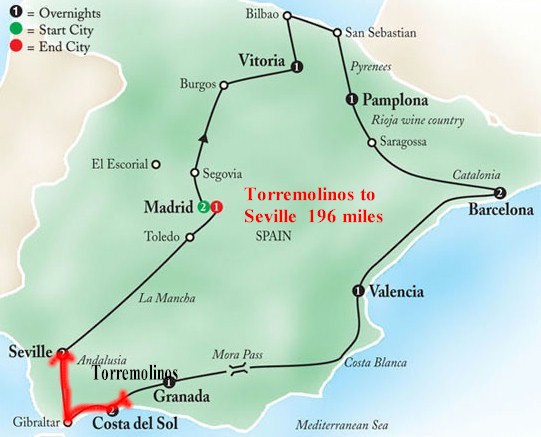
Day
12 May 21
Thursday
TORREMOLINOS
to
SEVILLE
We
could sleep a little later this morning. The
bus left at 8:30 am.
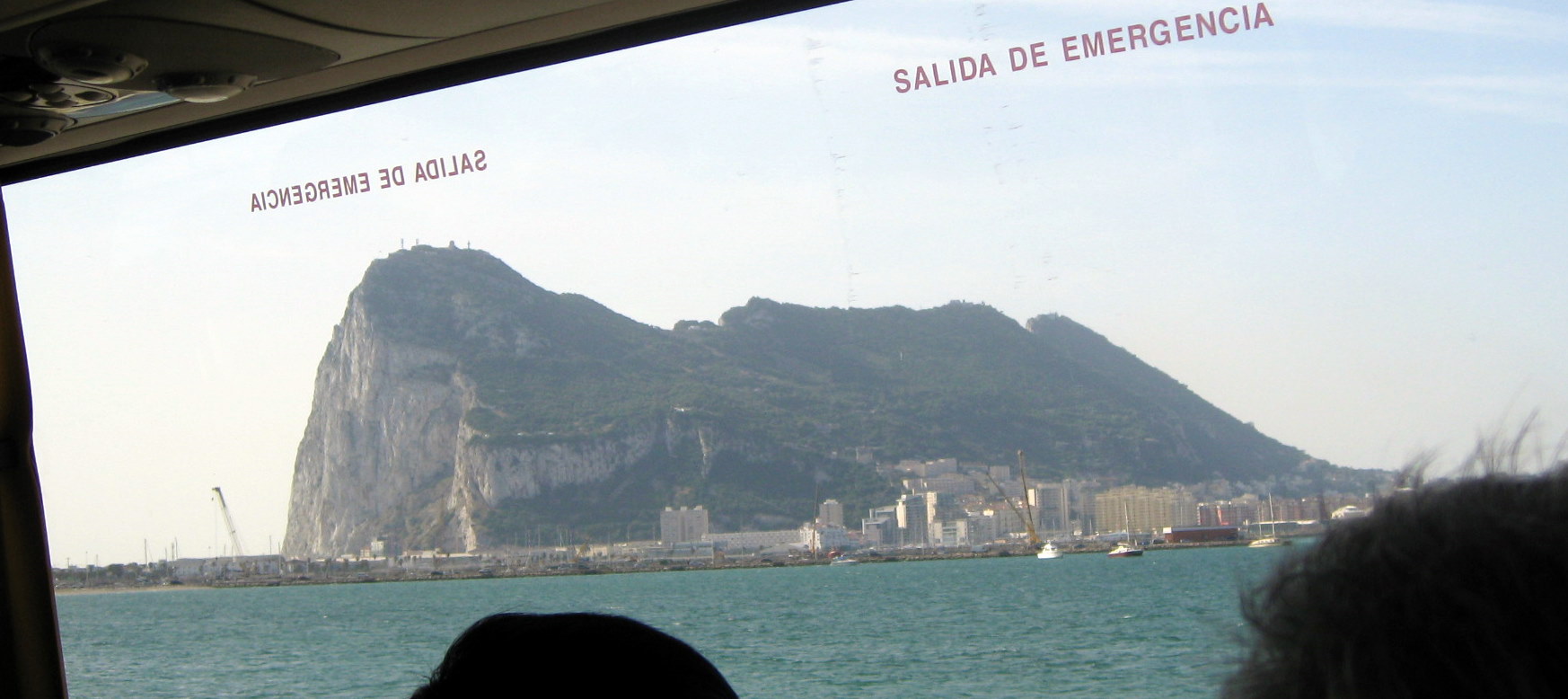
After several
hours we could see the Rock of Gibraltar off in the distance.
It was a beautiful, clear day. The
Rock of Gibraltar was quite a surprise to us.
I had seen pictures but had no idea of the size.
I had thought it was sort of a cliff.
Gibraltar is only 2 1/4 sq.
miles in size, but it has its own airport, currency, postage stamps, naval and
military garrisons, two cathedrals, its own newspapers, radio, and TV -- and a
casino.
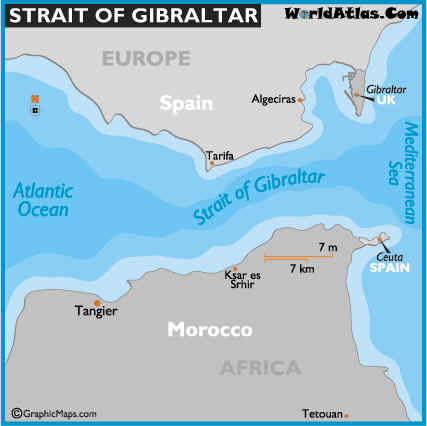
The Rock of Gibraltar is a
massive limestone rock rising out of the sea to a height of
1,396 ft.. It is often referred to as the Gateway to the Mediterranean
and was originally a Phoenician trading post called Calpe. In Greek mythology it
was the northern bastion of the Pillars of Hercules. Abyla (now Jebel Musa at
Ceuta) was the southern bastion. Ceuta is the northern most tip of Morocco.
Hercules is said to have stood with a foot on each "pillar," pushed
them apart, and formed a bridge across the straits. During Phoenician domination
of the Mediterranean, it was recorded that Calpe was the end of the world, the
point beyond which no trader should venture.
In 711, a Berber called Tariq
ibn-Ziyad landed and named the Rock "Gibel Tarik" (mountain of Tarik),
from which the name of Gibraltar is derived. The Rock was captured from the
Moors in 1309 by Guzman El Bueno and then recaptured by the Moors in 1333. In
1462 Spain seized and fortified the Rock against further attack but, in 1704,
during the Spanish War of Succession, a joint Anglo-Dutch fleet, under the
command of Prince George of Hesse Darnstadt, a field marshal in the Austrian
amry, made a surprise attack, capturing the fortress with little opposition.
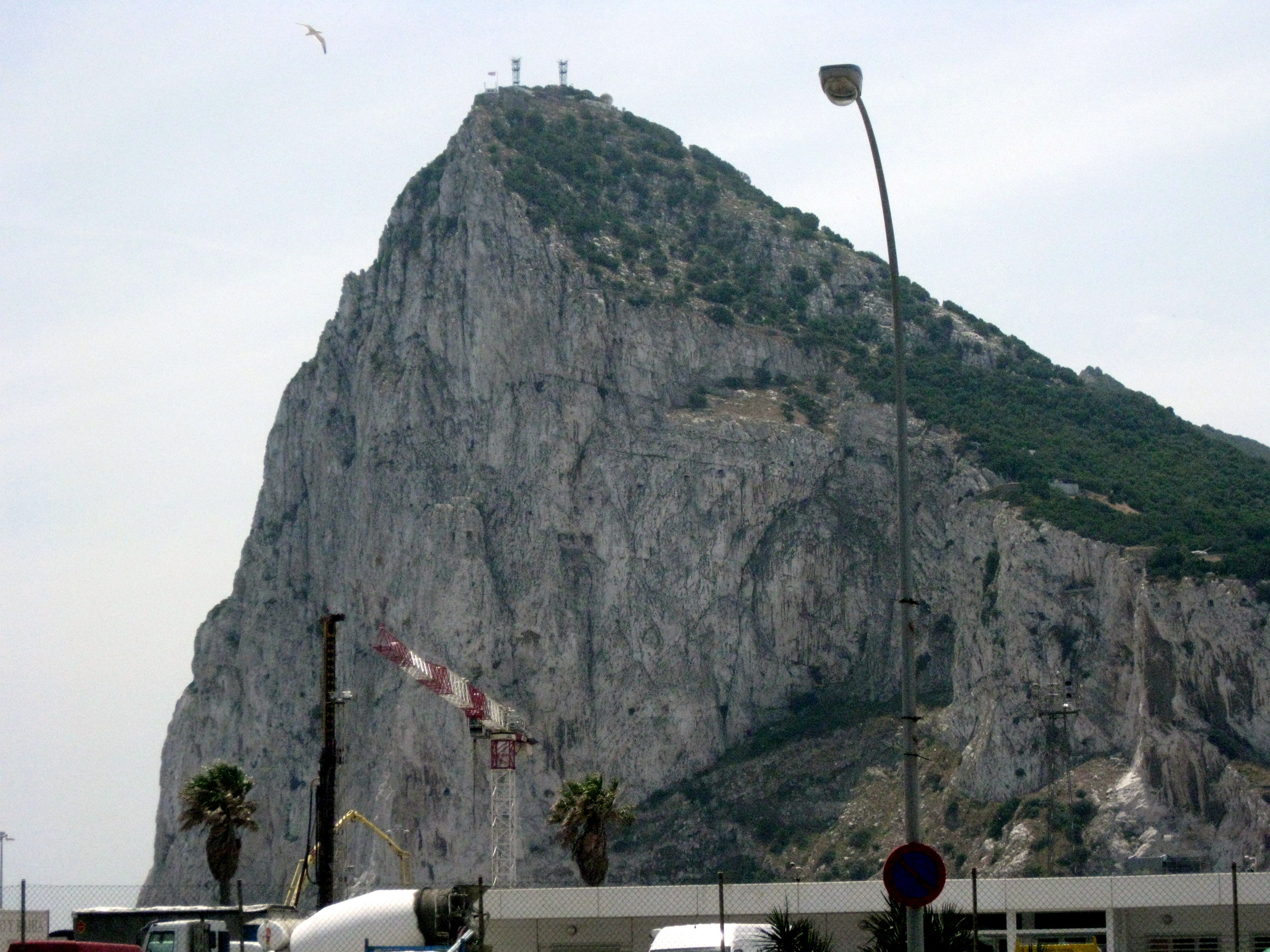
The Spanish and the French
have since made attempts to conquer the Rock by siege, bombardment, tunneling,
and, finally, with specially reinforced ships, upon which the British rained
red-hot cannon balls that set the ships afire.
There have been three
treaties confirming Gibraltar as a British possession -- Utrecht, 1713; Seville,
1727; and Versailles, 1783. In two world wars, the Rock was invaluable in
keeping the Mediterranean open in spite of aerial bombardment. Its only land
frontier -- referred to by many Gibraltarians as the Garlic Wall -- was closed
by the Spaniards in 1966, in an attempt to enforce Spanish sovereignty on the
people. The Spanish finally banned all trade to Gibraltar in 1969 in an attempt
to bring further pressure to bear. But the Gibraltarians, in a free vote,
decided by 12,138 to 44 to remain under British rule.
The Franco government closed
the gate to Gibraltar, creating a blockade and causing much hardship for people
on both sides of the frontier. The closure lasted from 1969 to 1985. Under King
Juan Carlos, the frontier was reopened to visitors entering from Spain.
Two languages are spoken
here: English and Spanish. The community is made up of Gibraltarians, Britons,
Spaniards, and a few Italians and Indians. In recent years Moroccans have taken
over many of the jobs.
Our bus had to park while
still in Spain. We had to walk
through customs from Spain to English Gibraltar, showing our passports.
Two small vans met us and took us to the top of the rock. 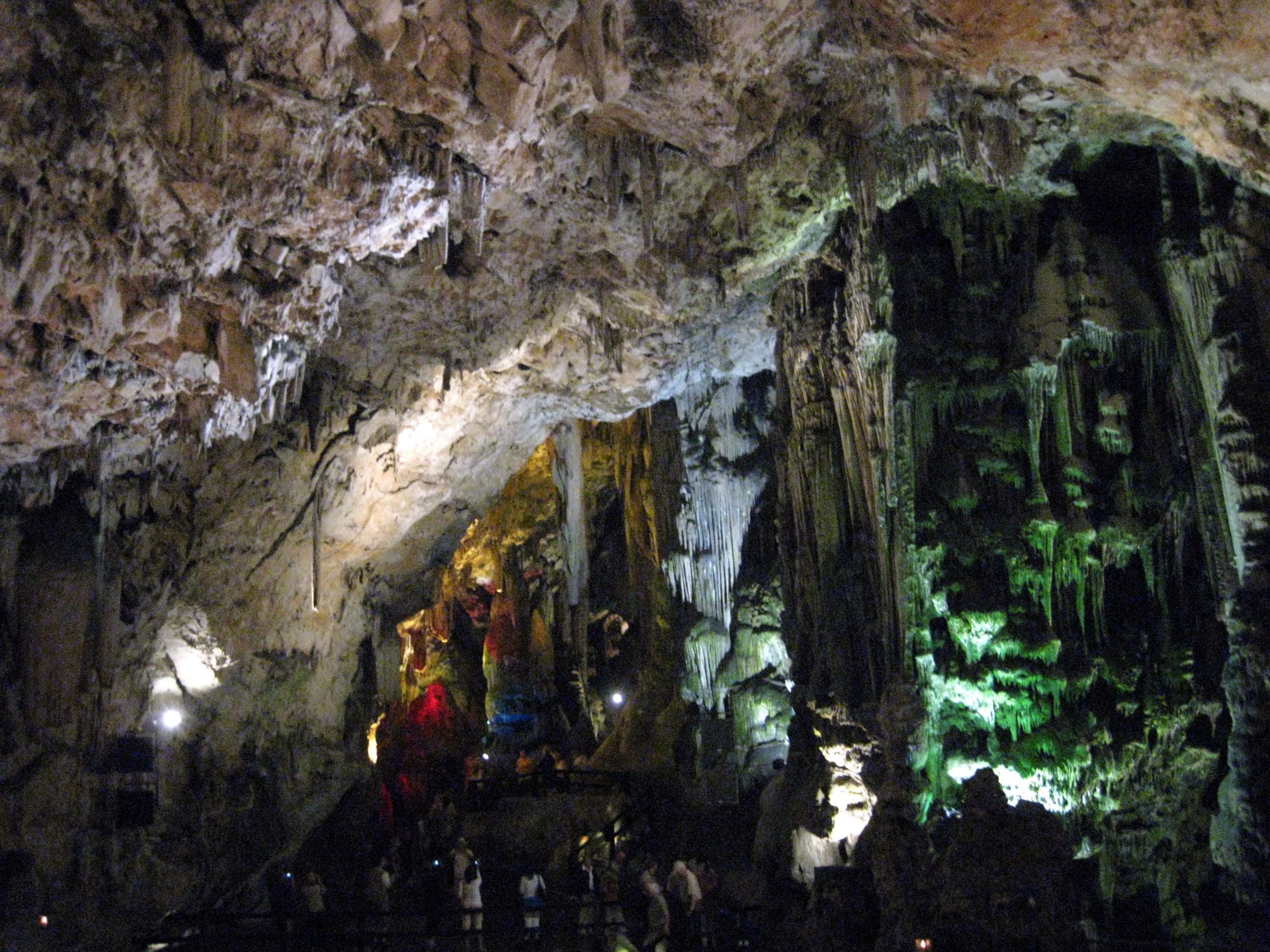
We went into a cave then back down the road where we stopped to view the
monkeys. 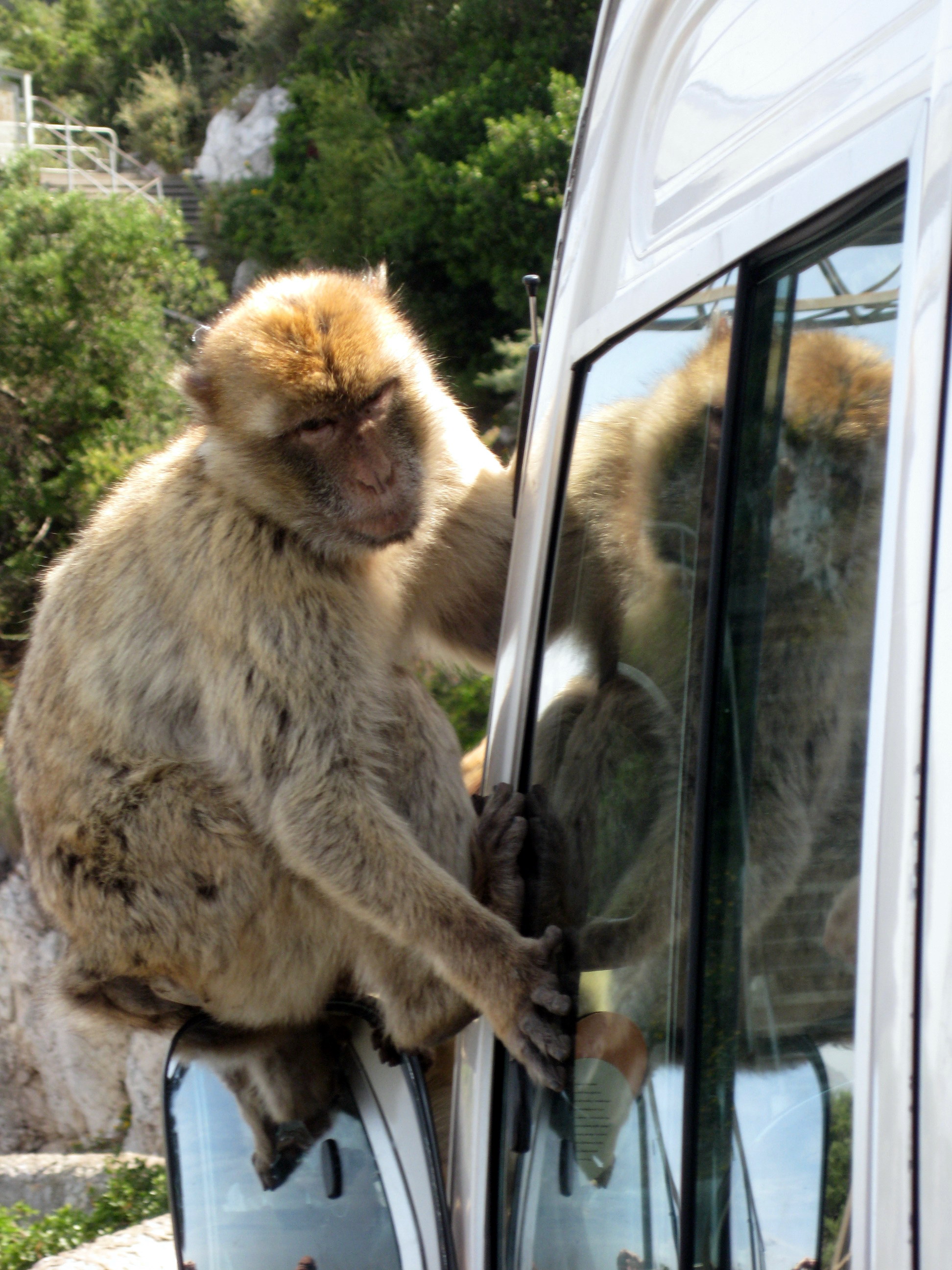
They were very
friendly but we were told to watch what we had in our hands because they would
grab it.
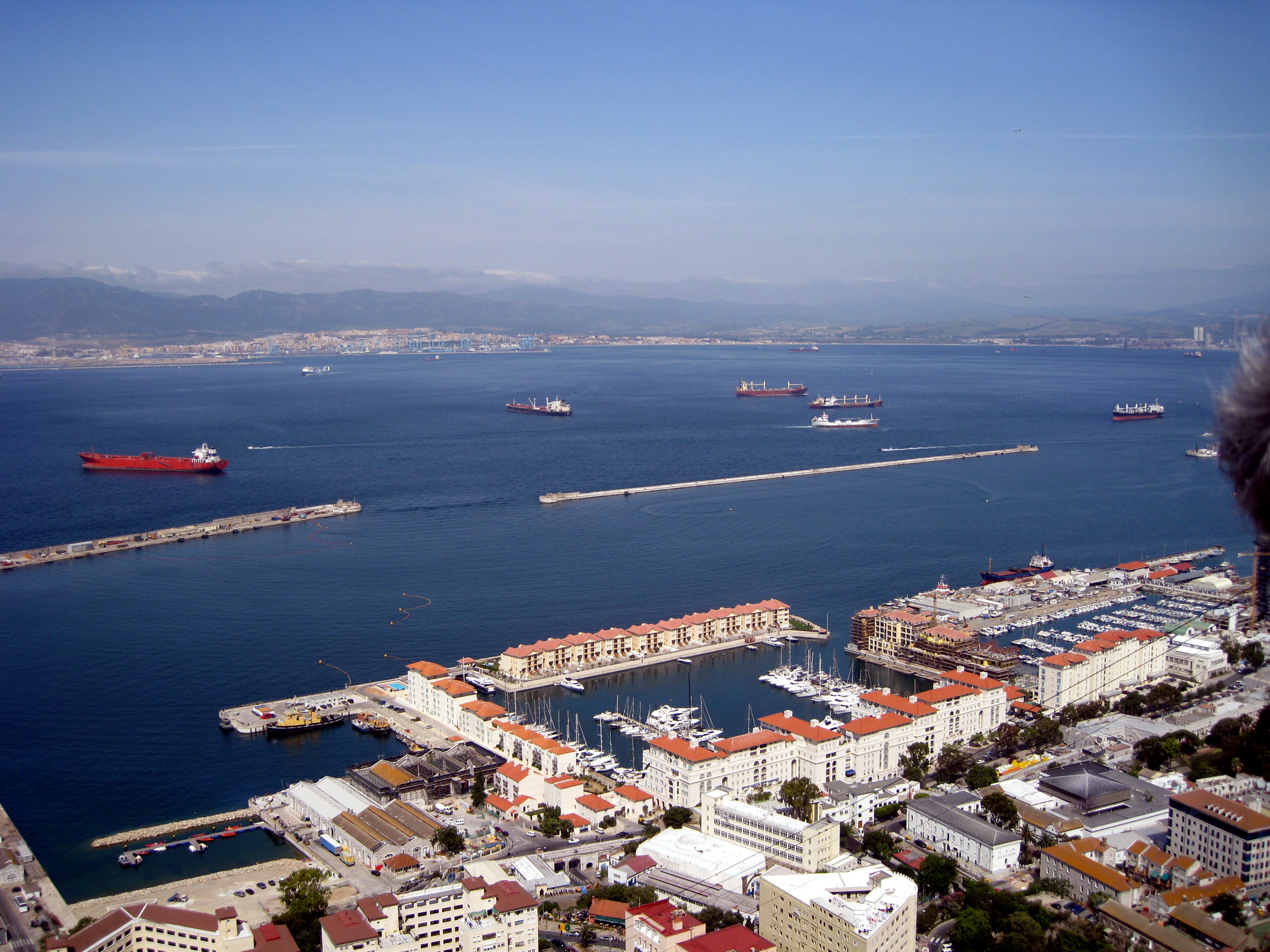
The views from the
top were unbelievable. It was such a
clear day that we could see Africa across the water.
After reaching the bottom again, we were given an hour for lunch.
We stopped in an outdoor café. I
had a hamburger, not very good, and my wife had a quiche.
The bus was stopped in front of the Anglican Cathedral.
It was not too large with Moorish arches in the windows and between the
columns. Work was being done on the
outside and we couldn’t see it for the scaffolding.
On to Seville with one rest
stop. When we arrived in Seville, we
had a short tour before going to the hotel.
We made a stop at the Spanish American Expo of 1929 building.
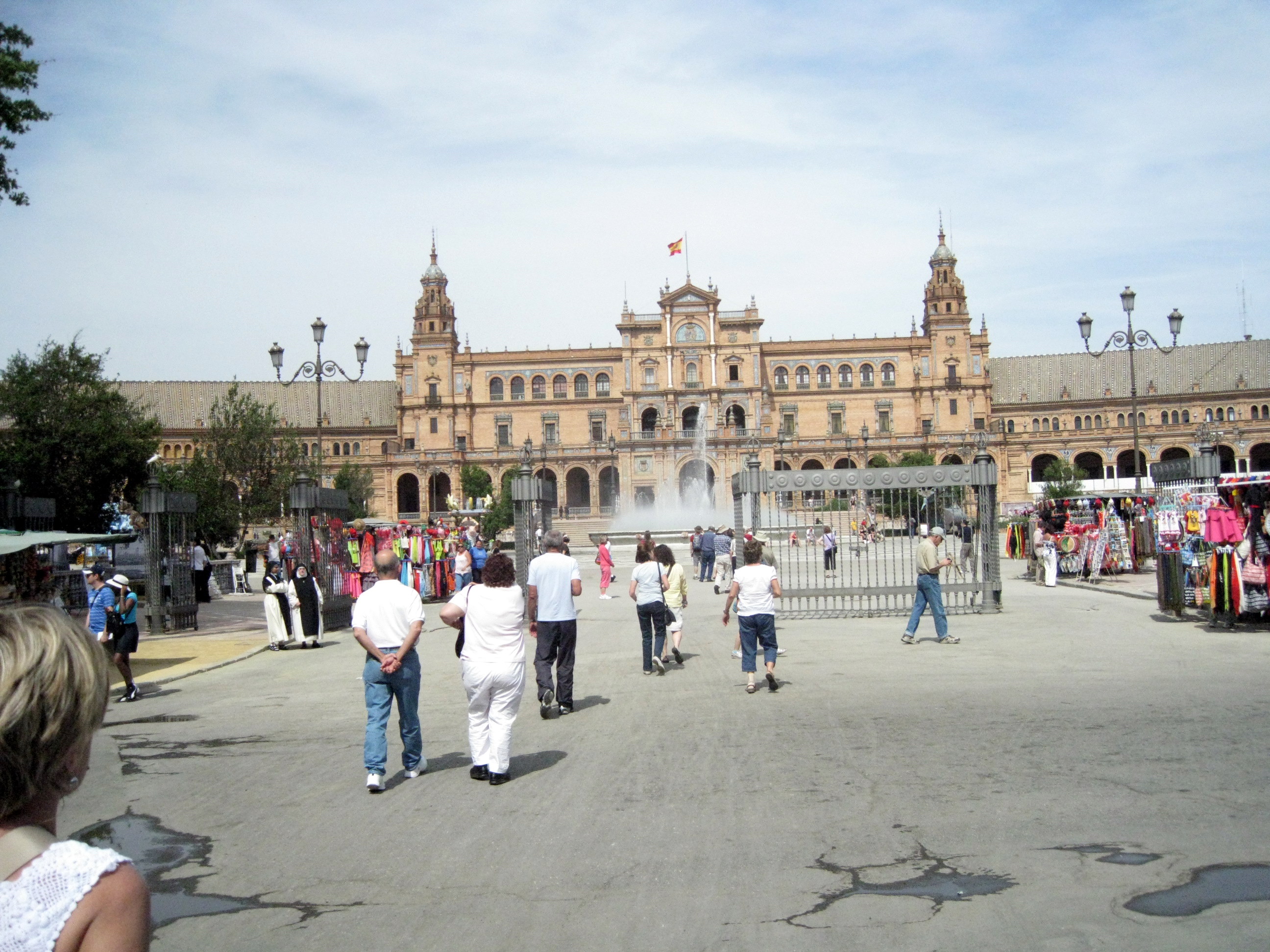
Our hotel, The Occidental
Sevilla, was modern and very attractive, but a long way from the center of
activity of Seville. My
electric razor had broken, so I went out in search of some shaving cream.
I found a small drug store near the hotel and bought a small can.
We went to the bar for drinks. Several
of our group joined us. Dinner was a
buffet. My wife loved the chicken
and the crispy ham…she went back for seconds.
We talked to several people who were unhappy about our hotel being so far
out of the center of things. Because
of the distance, it was impossible to enjoy the night
life of Seville so we went to bed.











